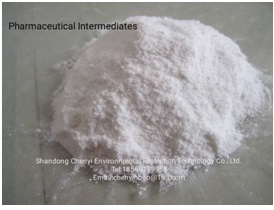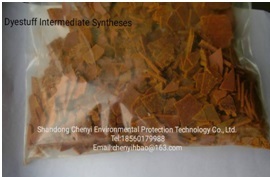Since late November, the weather has been gloomy and cold, with the longest continuous yin for 9 days. In the middle, it is sunny for 1 to 2 days. It is still half-covered. It starts to fog up to 10 to 11 o'clock and is scattered. At 4 o'clock in the afternoon, the fog rises again. In the face of such weather, vegetable farmers are all worried. According to investigation and consultation, such bad weather has caused damage to vegetables, especially various diseases. Therefore, we must immediately take effective measures to overcome the diseases caused by even the cloudy days to ensure the vegetables to tide over the difficulties. Root failure On November 1st, when the sudden drop in temperature suddenly occurred, the greenhouse vegetables that hadn't had time to get smashed were subjected to freezing damage, and the subsequent cloudy days again made the temperature of the greenhouse lower. According to the investigation, due to the long-term low temperature, the lack of light caused the photosynthetic plants to grow. Inadequate production, low temperature wounds, root disease, affecting the health of the roots, the roots stop developing, no new roots. On December 10th in Qingliu Village of Gaocheng City, there was a shed of tomatoes that had been pulled out one month earlier. In addition, the seedlings during the seedling growth period show slow growth, root rot, and root rot of the rot of Pythium under these weather conditions. Plants of the adult plant have stem base rot, wilting stem base rot, or epidemic disease. Looking at the root system, the roots of the hairy roots are rotted and browned first, and the main roots of the hair roots are also rotted by the lesions, while the open stems are hollow and hollow, which is a manifestation of lack of water and fertilizer nutrition. Prevention and control suggestions: (1) The use of biological bacterial fertilizers to protect the root system. As the saying goes, the root is deep and leafy. Only with a good root system can we resist cold damage and normal transport of water and fertilizer. According to the experience, the application of bio-organic fertilizer can increase the ground temperature by 2°C~3°C compared with the temperature of chemical fertilizers. Bio-organic fertilizer can also improve the soil, prevent diseases, promote new roots and promote the roots to develop into thick roots in depth. Multiple effects. The investigation of the Gaopan shed in Qingliu Village of Gaocheng City on December 10th was another sight. The tomatoes of his family had already had 4 to 5 fruits and they grew very normal. At the bottom of his shed, he applied a bio-organic fertilizer from Nanguochun. He used 2 kilograms of mu, and this shed area counted his tomatoes as sturdy. The farmers in Shandong use the antibacterial 968 to raise roots, and the use of the bacteriostatic 968 can strengthen the seedlings, prevent dead trees, resist viruses, inhibit nematodes, reduce disease occurrence, and promote flower bud differentiation. After the cloudy days, the roots were stimulated with bacteriostatic 968 to promote rooting and enhance cold resistance and frost resistance. (2) Prevention and treatment of root diseases. First improve the soil and optimize the root growth environment. Apply chitin such as sea cucumber, or chitin-containing fertilizers such as sea power. Pythium root rot and blight were used to irrigate the roots, and with 6000 times liquid love more. You can use 600-800 times the biological bacteria Tericoat or 1000 times eugenol, spray 5 days, 3 times. Also can choose to use trichloro isocyanuric acid, fasting net, moldy grams, ank manganese zinc, flumorph, An Taisheng, anti-virus and other agents to control. Stem base rot diseased with 40% dichloroisocyanuric acid 500 times or 85% trichloroisocyanuric acid 1500 times or 500% 50% chlorobromoisocyanurate for 7 days, once a day. 2 to 3 times. (3) Agronomic measures. Do not water on cloudy days so that cold water does not damage roots and roots. In the absence of rain and snow, the grasshoppers should be pulled up around noon, and the scattered light should be used to increase the light. Suddenly clear, it should pay attention to prevent flash seedlings, foliar spray of brown sugar + love more or brassin, to prevent dehydration and wilting. Ye Huang Recently, yellow leaves have appeared in many vegetables. The causes are various. The most common are physiological diseases, such as the symptoms of yellowing on the ground when the roots of the plants are prematurely decayed and sitting on the fruit; especially in the salinization greenhouses, the yellow leaves are more obvious; in addition, the leaves are yellow after being chilled. In front of the shed, yellow leaves are more serious. Followed by diseases caused by yellow leaves, recent surveys, tomato Verticillium wilt, blight, ulcer disease, melons, blight, wilt disease, these diseases caused yellow leaves. Leafy vegetables such as spinach and oil and wheat have sclerotia and downy mildew and yellow leaves. Leaf spot and spot blight of celery occur. Severe yellow leaves decreased photosynthetic capacity and plant weakness. Prevention Proposals: (1) Leaf-spraying Amino Acid Leaf Fertilizer every 7-10 days in winter, such as Five-Leaf Leaf; Can also be sprayed with sweet and sour liquid: 1% brown sugar + 1% urea + 2% vinegar + 0.2% potassium dihydrogen phosphate Or spray photosynthetic fertilizer +600 times green wind 95. (2) For the yellow leaves caused by soil salinization, chitin fertilizer should be applied such as shellfish 1 kg/mu or sprayed with 0.5% amino oligosaccharide water 500 times liquid + love more than 6000 times liquid. Big lines often draw ventilation. Chilled yellow leaves with brown sugar + love more or brassin. (3) Verticillium wilt, Fusarium wilt, and blight, preferably treated with biological agents. Use 45 ml per acre to irrigate the roots with 1000 times solution of oxazine, once a day for 7 days, 3 times in a row; or irrigate the root with 1000 times of the liquid with a net of wilt, 500 ml of liquid per strain; also use 85% of trichloro isocyanurate Acid 1500 times or 50% Chlorobromoisocyanurate 500 times sprinkling diseased plants, 7 days, once every 2 to 3 times. Liquor with warm water (slightly heated) under continuous cloudy weather. Do not flush with water to prevent indoor humidity. Use a scoop or a pot to fill the water. Sclerotinia prevention, first remove the serious diseased plants, and then spray 50% acetaminophen WP 1500 times. Leaf spot and spot blotch of celery were sprayed with 85% trichloroisocyanuric acid 1500 times, once a day for 7 days, 2 or 3 times. Rotten fruit Even cloudy days cause plant physiology incoordination. Nutrient imbalance is the most common condition, such as the calcium depletion of the umbilical rot, and the cold injury causes rot and rot. Even after the cloudy days appear, it is not a shed for a few days to keep warm, causing aging of the peel and severe cracking. Because of the restriction of low-temperature air release, the pathogenic bacteria infect the fruit is also more serious, tomato, eggplant and pepper produce M. blight disease, cucumber disease, sclerotinia disease melon. Prevention and control suggestions: (1) Control the humidity in the greenhouse and increase the temperature. The soil method is to use the corn shaft to finish the smoke and put it into the room to raise the temperature. In addition, the flue can be used to increase the temperature of coal fire. (2) Remove the disease after the weather gets better, apply foliar fertilizer on the foliar to quickly supplement the deficient elements, such as spraying 0.2% to 0.3% calcium chloride to treat rot fruit, 1% sugar solution + 0.2% dihydrogen phosphate Potash rot and fruit. The control of M. blight and epidemic diseases can be sprayed with eugenol 1000 times solution or 60% fluoromorpholine wettable powder 600-900 times solution once the disease is removed, once every 10 days, and twice. Low temperature disease The two diseases of powdery mildew and gray mold are low-temperature diseases, and the lack of light in the winter is prone to occur. Prevention Proposal: Powdery mildew should be based on prevention, can spray high-fat membrane, trichloroisocyanuric acid or chitin prevention occurs. Early onset of rotation with love, fluconazole, myclobutanil, Shigao prevention. In the early stage of gray mold, smoked with the procymidone agent was smoked at night, and cross-conjugation was sprayed with Shijiale + trichloroisocyanuric acid. Cloudy biopharmaceuticals Trik, Polyoxin and Green Emperor. Pay attention to diseased leaves and fruit brought out of the shed, put in special pits and disinfected with lime on the surface to prevent germs from drifting away from the wind and causing re-infection.
Intermediates in organic synthesis refer to molecules that have not yet been fully integrated into the desired molecules in organic chemical synthesis. They are only an intermediate state of the molecule. They may be either an ionic group or a relatively stable macromolecule with an external non-electric property. After being synthesized, it can become a stable compound. In short, Organic Intermediates are intermediates used in chemical synthesis, including alcohols, phenols, benzene, alkenes, ketones, amines, anhydrides and so on. Organic intermediates can be used as Pharmaceutical Intermediates, dye intermediates and Material Intermediates. Organic intermediates are mainly used in the development of organic synthetic chemical products, especially in medicine, pesticides, dyes, organic pigments, photosensitive materials and so on.
If you have any questions, please contact with us directly.Organic Intermediate are produced by HRT bearing With High Quality and Good Appearance. Welcome you can visit our Factory.For inqury, please send mail directly to us.
Organic Intermediate Organic Intermediates,Linagliptin Intermediates,Pidotimod Intermediates,Donepezil Intermediate Shandong Chenyi Environmental Protection Technology Co.,Ltd , https://www.chenyichemistry.com

Beating the Cloudy Science to Prevent Diseases
